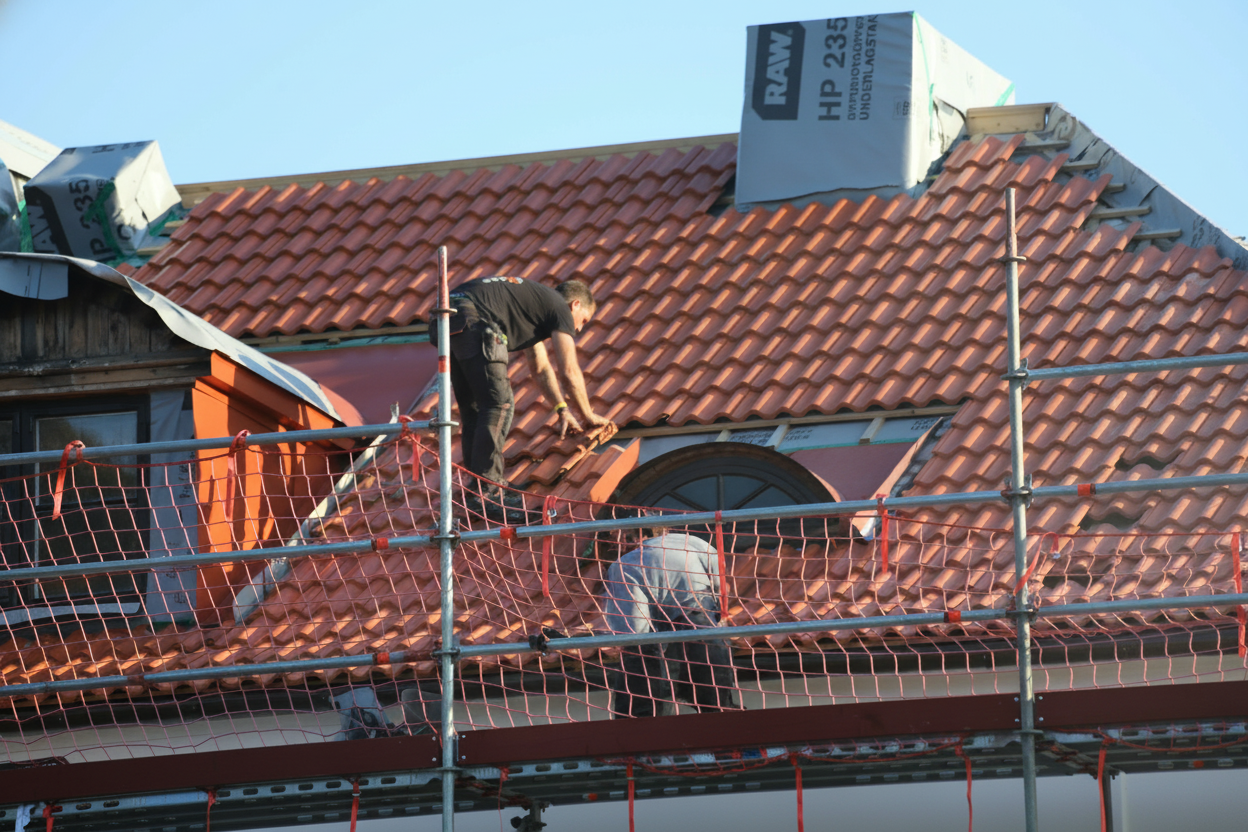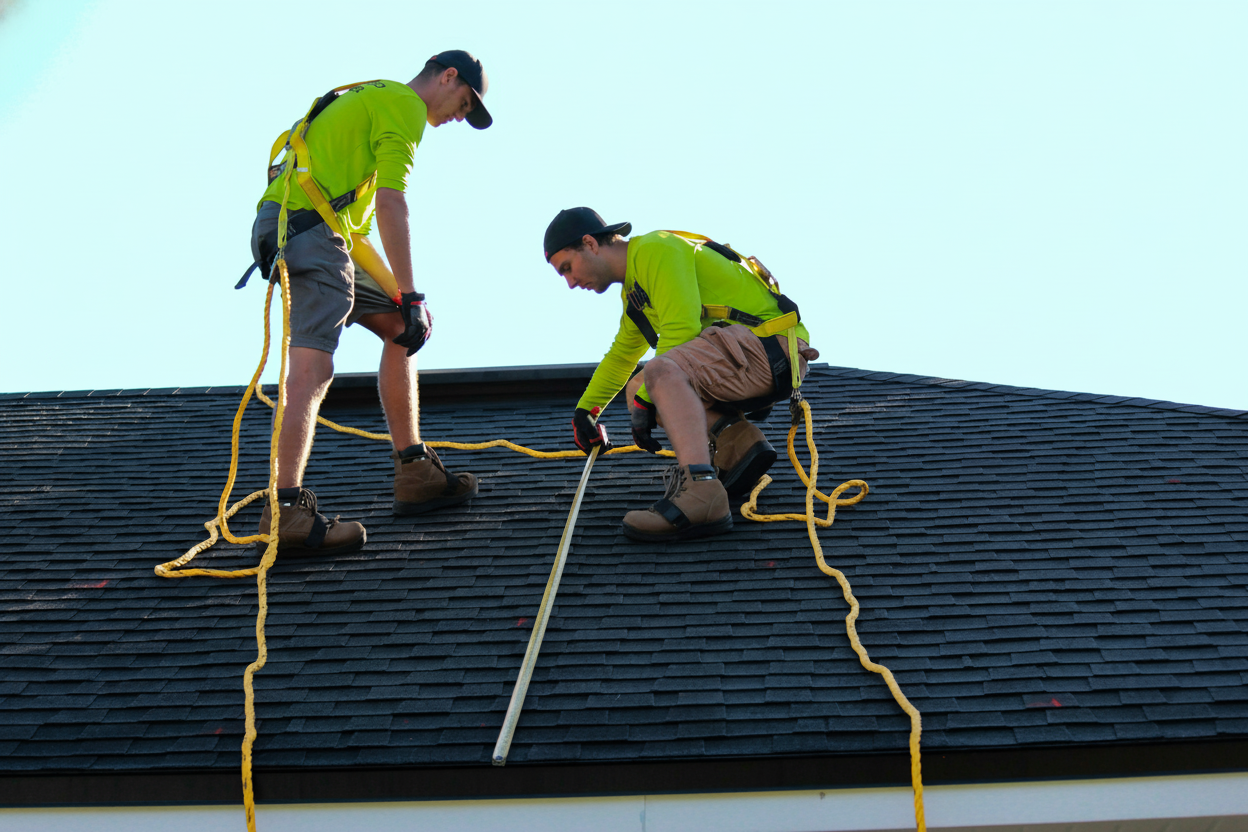
Hurricane Roof Preparation Guide for Florida Homes 2025
Florida-Specific Roofing & Climate Challenges
November 4,2025
Hurricane Roof Preparation Guide for Florida Homes 2025

Alt text: Professional roofing contractors performing storm preparation maintenance on a residential roof, showing workers installing hurricane-resistant materials
Every summer, Florida homeowners face the reality of hurricane season. Your roof stands as the first line of defense against wind, rain, and storm surge. But is it truly ready for what 2025 might bring?
Most homeowners wait until a storm warning is issued to think about roof protection. By then, it’s often too late to schedule inspections or make critical repairs. The good news is that proper preparation now can save you thousands in damage costs and keep your family safe when severe weather strikes.
Taking action before hurricane season hits can mean the difference between minor repairs and a complete roof replacement after the storm passes.
Understanding your roof’s weak points
Your roof faces extreme stress during hurricanes. Wind speeds can exceed 150 mph, while driving rain tests every seal and joint. Here are the most vulnerable areas that need your attention:
Loose or improperly installed shingles become projectiles in high winds. Old or damaged flashing around chimneys and vents creates entry points for water. Compromised roof edges and eaves are prone to uplift when wind gets underneath. Clogged gutters and poor drainage lead to water pooling and potential leaks. Weak truss systems or outdated structural support can fail under extreme pressure.
These vulnerabilities often go unnoticed until a storm exposes them. A professional inspection before hurricane season can identify problems while you still have time to fix them. Many Florida homeowners discover that small repairs made in spring prevent catastrophic failures during summer storms.
Regular roof inspections in Florida help catch these issues early. Even minor damage from previous storms can weaken your roof’s ability to withstand the next one.
Florida’s building codes require specific wind ratings for roofing materials. Make sure your roof meets current standards to qualify for insurance coverage.
Choosing hurricane-resistant materials
Not all roofing materials perform equally in extreme weather. If you’re planning upgrades or replacement, these options offer the best storm protection:
Metal roofing systems provide superior wind resistance with fewer seams to fail. Standing seam designs can withstand winds over 140 mph when properly installed. Metal also resists fire and reflects heat, reducing cooling costs between storms.
Impact-resistant shingles are specifically rated for hail and debris impact. Class 4 impact-rated shingles can save you money on insurance premiums while protecting your roof from flying debris. These shingles also resist wind uplift dangers better than standard options.
Concrete and clay tiles offer natural wind resistance due to their weight. When installed with proper fastening systems, tile roofs can survive Category 5 hurricanes. However, individual tiles may crack from impact, so regular inspection is essential.
The best roofing materials for Florida heat also tend to perform well in storms. Light-colored or reflective materials help reduce cooling costs while meeting wind resistance requirements.
| Material Type | Wind Resistance | Impact Rating | Lifespan |
|---|---|---|---|
| Metal Roofing | 140+ mph | Excellent | 40-70 years |
| Impact Shingles | 110-130 mph | Class 4 | 25-30 years |
| Concrete Tile | 150+ mph | Good | 50+ years |
| Standard Shingles | 90-110 mph | Fair | 15-20 years |
Essential maintenance before storm season
You don’t need to replace your entire roof to improve storm readiness. These maintenance steps can significantly strengthen your existing roof:
- Schedule a professional inspection to identify hidden damage or weak points
- Replace missing or damaged shingles and secure any loose materials
- Seal all flashing around vents, chimneys, and roof penetrations
- Clean gutters and downspouts to ensure proper water drainage
- Trim overhanging tree branches that could fall on your roof
Professional inspections reveal problems that homeowners typically miss. Experienced roofers know how to spot signs of storm damage from previous seasons that could compromise your roof’s integrity.

Alt text: Homeowners and roofing professionals inspecting a residential roof for hurricane season preparation, showing people examining shingles and structural elements
Coastal homeowners face additional challenges from salt air and moisture. Preventing roof damage from coastal air requires specialized coatings and materials that resist corrosion.
Florida’s rainy season starts before hurricane season peaks. Address drainage issues early to prevent water intrusion problems that weaken your roof structure.
During Florida’s rainy season, even minor leaks can cause significant damage. Taking steps to prevent roof leaks before heavy rains arrive protects your home year-round.
Why professional help matters
Roof preparation isn’t a DIY project. Professional roofers bring expertise that makes a real difference:
They understand Florida roofing codes and ensure your roof meets current requirements. They can identify structural issues that aren’t visible from the ground. They have access to commercial-grade materials and proper installation equipment. They complete work safely and efficiently before storm season arrives. They provide documentation that may be required for insurance claims.
Foxhaven specializes in storm preparation for Florida homes. Our team understands the unique challenges of coastal and inland properties. We’ve helped thousands of homeowners strengthen their roofs against hurricane-force winds and driving rain.
Whether you need a complete roof upgrade or targeted repairs, professional guidance ensures your home is truly ready. Many homeowners discover that small investments in preparation pay for themselves many times over when severe weather strikes.
